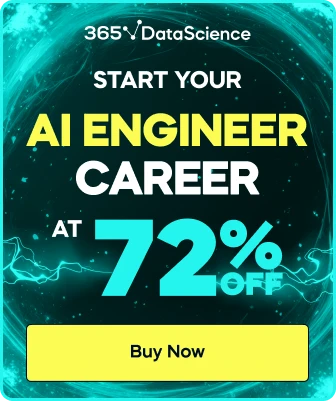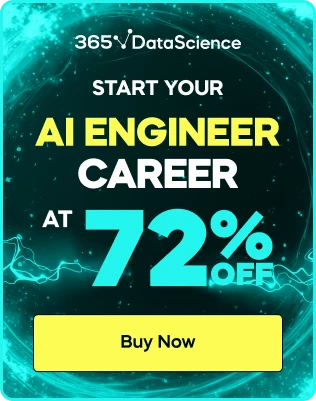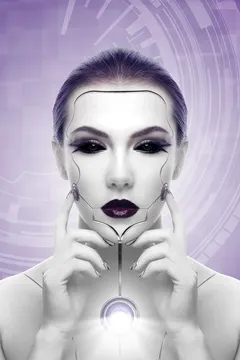The history of AI (artificial intelligence) spans over seven decades, marked by groundbreaking innovations, setbacks, and achievements. From its theoretical foundations to today's sophisticated systems, the evolution of AI has transformed our understanding of machine intelligence and its potential.
This article traces AI's journey from its roots to today's most advanced innovations, highlighting key developments and breakthroughs that have shaped this transformative technology.
For those more visual learners, check out our video: A Brief History of AI.
Now, let’s go back to the beginning of the history of AI.
Table of Contents
- The Birth of Artificial Intelligence: Alan Turing's Vision
- The Dartmouth Conference and Early Beginnings
- The Evolution of Artificial Intelligence: Challenges and Breakthroughs
- The Rise of Modern AI: Deep Learning and Neural Networks
- The Current Era: Large Language Models and Generative AI
- The Impact of AI on Different Industries
- Looking Back: The Impact of AI History
- Learn AI with 365 Data Science
- FAQs
The Birth of Artificial Intelligence: Alan Turing's Vision
When asked "Who created AI?" most people point to Turing.
The story of AI begins in 1950 when British mathematician Alan Turing posed a revolutionary question: "Can machines think?" This fundamental inquiry would lay the groundwork for artificial intelligence as we know it today. Turing's contribution was transformative, shifting AI discussions from theoretical philosophy to practical experimentation.
Alan Turing's AI legacy extends far beyond his initial question. His development of the Turing Test became a cornerstone in evaluating machine intelligence.

The test, elegant in its simplicity, involves a human judge trying to distinguish between human and machine conversations. If the judge cannot reliably tell which is which, the machine passes the test—though no AI has yet achieved this milestone under strict testing conditions.
This marked the beginning of the history of AI.
The Dartmouth Conference and Early Beginnings

When was AI invented? The formal birth of artificial intelligence as a field occurred in 1956 at the historic Dartmouth Conference, where the term ‘artificial intelligence’ was first coined.
This conference brought together experts in neural networks, computation theory, and automata theory to explore how machines might simulate human intelligence.
The question of who made AI really doesn't have a single answer—it was a collaborative effort of brilliant minds who believed in the possibility of creating thinking machines. These pioneers laid the foundation for what would become one of the most transformative technologies in human history.
The Evolution of Artificial Intelligence: Challenges and Breakthroughs

The evolution of AI hasn't been without its challenges. During the 1960s and 70s, the field experienced what became known as the 'AI winter,' a period marked by reduced funding and interest due to technological limitations.
This period, while challenging, proved crucial in understanding the complexity of creating artificial intelligence.
When did AI start making real progress? The first major breakthrough after this period came in 1997, when IBM's Deep Blue defeated world chess champion Garry Kasparov. This achievement coincided with a surge in computing power and the expansion of the internet in the late 1990s and early 2000s, creating perfect conditions for AI advancement.
To learn more about early AI models and their evolution into today's powerful systems, explore our Intro to AI course. It covers all the foundational knowledge and skills you need to start learning AI.
The Rise of Modern AI: Deep Learning and Neural Networks

A pivotal moment in the history of AI came in 2006, when Geoffrey Hinton revolutionized the field by introducing ‘deep learning’ techniques. Deep learning neural networks, inspired by the human brain, require substantial data and computational power—resources that were finally becoming available.
The field saw rapid advancement with several key developments:
- 2011: IBM's Watson AI demonstrated mastery of natural language processing by winning Jeopardy!
- 2012: Stanford and Google researchers advanced deep neural networks with breakthrough research in unsupervised learning
- 2017: The Google Brain team introduced transformers, revolutionizing natural language processing
The Current Era: Large Language Models and Generative AI

The latest chapter in AI history began in 2018 with OpenAI's release of the first GPT model. This development ushered in the era of Large Language Models (LLMs), culminating in the release of ChatGPT in late 2022.
These advances were a quantum leap in AI's ability to understand and generate human-like text, marking a new frontier in artificial intelligence history.
Interested in learning more about LLMs and NLP? We offer two comprehensive courses taught by expert BBC data scientist Lauren Newbould. Start learning with our Intro to LLMs and Intro to NLP for AI courses.
The Impact of AI on Different Industries

The history of artificial intelligence doesn’t stop there. Recent AI breakthroughs have dramatically expanded the technology's capabilities across domains.
OpenAI's o1 model has demonstrated unprecedented reasoning abilities in mathematics and coding, while Google DeepMind's GenCast has transformed weather prediction through accurate forecasting of extreme weather events.
In the field of computer vision, Microsoft's Copilot Vision has enhanced how AI systems interact with visual content, enabling more intuitive web navigation and data analysis. Meanwhile, Google's Veo has revolutionized video creation, allowing high-quality content generation from simple text or image inputs.
Healthcare has seen particularly promising advances, with AI models achieving remarkable accuracy in cancer diagnosis and treatment prediction. These developments, combined with breakthroughs in scientific research and quantum computing, showcase AI's growing role in solving complex real-world challenges.
Looking Back: The Impact of AI History
The journey of artificial intelligence from its inception to the present day demonstrates remarkable progress. What started as a theoretical question about machine thinking has evolved into practical applications that are reshaping our world.
From Alan Turing's pioneering work to today's sophisticated AI systems, each breakthrough has contributed to building increasingly capable and intelligent machines.
As we look back at what was the first AI and how far we've come, it's clear that the field continues to evolve at an unprecedented pace. The history of AI is not just a timeline of technological achievements; it's a testament to human ingenuity and our endless pursuit of expanding the boundaries of what's possible.
Understanding the history of artificial intelligence helps us appreciate both how far we've come and the exciting possibilities that lie ahead. As we continue to push the boundaries of AI technology, we remain inspired by the visionaries who first dared to ask: "Can machines think?"
Learn AI with 365 Data Science
Ready to start learning AI? 365 Data Science offers comprehensive courses covering everything from AI fundamentals to advanced machine learning and AI techniques. Our structured learning paths, hands-on projects, and expert-led instruction make complex AI concepts accessible to beginners while providing the depth needed for professional development. Make your mark in the history of AI by starting your AI journey with us today.
FAQs











